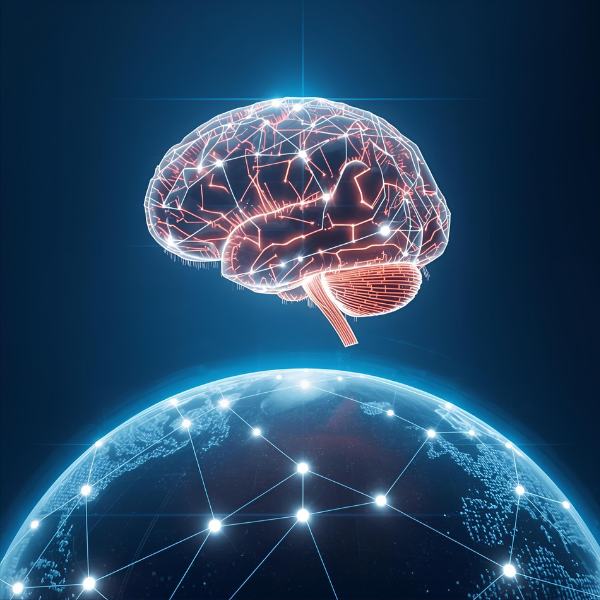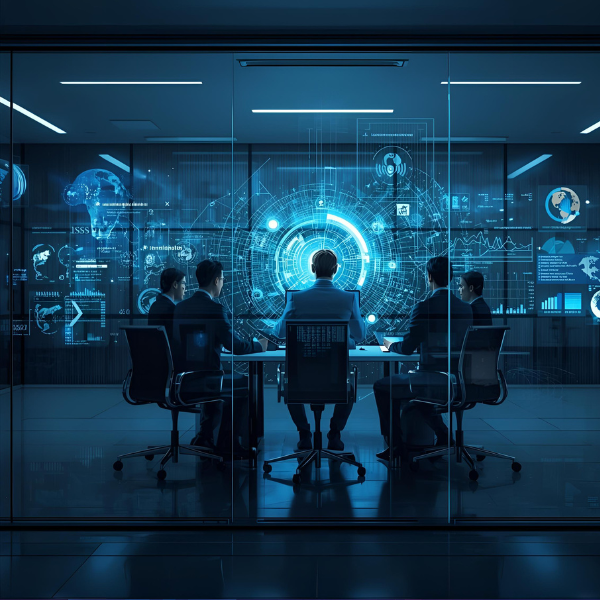
The Future of AI: Key Trends for 2025 and Beyond
The Future of AI: Trends Shaping 2025 and Beyond
Artificial intelligence is no longer a futuristic concept; it’s a core component of modern business strategy. As we look toward 2025 and beyond, AI is set to evolve in ways that will profoundly reshape industries, redefine jobs, and unlock new levels of efficiency. Understanding the trajectory of these changes is crucial for any leader aiming to maintain a competitive edge. This post will explore the key AI trends poised to make the biggest impact, moving from technological advancements to their practical applications in the business world.
We will delve into the rise of more sophisticated AI models, the increasing importance of ethical AI, and how automation is transforming everyday work. You will also see how AI is creating specialized solutions across different sectors and what it means for your digital transformation journey.
Trend 1: The Rise of Generative AI and Multimodal Models
The conversation around AI has been dominated by generative models like ChatGPT, and this trend is only accelerating. These systems, capable of creating new content—from text and images to code and complex data—are becoming more powerful and accessible. The next wave of innovation lies in multimodal AI, which can understand and process information from multiple sources simultaneously, such as text, images, and audio.
Imagine an AI that can watch a product demonstration video, listen to the commentary, and automatically generate a detailed user manual complete with illustrations and a step-by-step guide. This is the power of multimodality. For businesses, this means more intuitive and comprehensive ways to analyze data and automate complex tasks. For example, a marketing team could use a multimodal model to analyze social media trends by processing images, video content, and text comments to gain a holistic view of customer sentiment.
Trend 2: AI-Powered Hyper-Automation
Automation is not a new concept, but AI is taking it to a new level. Hyper-automation involves using a combination of AI, machine learning (ML), and robotic process automation (RPA) to automate not just simple, repetitive tasks, but also complex business processes. It’s about creating an ecosystem where digital workers can handle entire workflows, from data entry and analysis to decision-making and communication.
In 2025, we will see hyper-automation become more integrated into core business functions. In finance, AI can automate the entire accounts payable process, from receiving an invoice to processing payment and recording the transaction. In human resources, it can manage the entire employee onboarding journey, from sending offer letters to scheduling training and granting system access. The primary benefit is not just cost savings, but also increased accuracy, speed, and the ability for human employees to focus on strategic, high-value work.
Trend 3: An Unwavering Focus on Ethical and Responsible AI
As AI systems become more integrated into society, the focus on ethics and responsibility is growing stronger. Organizations are recognizing that building trust is as important as building technology. An AI model that produces biased results or cannot explain its decisions is a significant business risk. Consequently, the demand for transparent, fair, and accountable AI is on the rise.
This has led to the emergence of “Responsible AI” as a critical field. It encompasses several key areas:
- Explainability: The ability to understand and explain how an AI model arrived at a particular conclusion. This is vital in regulated industries like finance and healthcare.
- Fairness: Ensuring that AI systems do not perpetuate or amplify existing biases related to race, gender, or other protected characteristics.
- Privacy: Protecting user data and ensuring that AI models comply with regulations like GDPR.
Businesses that prioritize ethical AI will not only mitigate risks but also build stronger relationships with customers. Investing in governance frameworks and tools to monitor AI models for bias and performance will become a standard business practice.
Trend 4: Vertical AI and Industry-Specific Solutions
While general-purpose AI models are impressive, the greatest value often comes from solutions tailored to specific industries. This is known as “Vertical AI.” Instead of a one-size-fits-all approach, developers are creating AI models trained on industry-specific data and designed to solve unique challenges.
Here are a few examples:
- Healthcare: AI models are being developed to analyze medical images with greater accuracy than the human eye, predict disease outbreaks, and personalize treatment plans for patients.
- E-commerce: AI is used to create hyper-personalized shopping experiences, optimize supply chains, and manage inventory with predictive analytics.
- Education: AI-powered platforms can create adaptive learning paths for students, providing personalized instruction and feedback based on their individual performance.
By 2025, we can expect to see an explosion of vertical AI solutions that offer deep, domain-specific expertise. Businesses that adopt these tools will gain a significant advantage over competitors relying on more generic platforms.
Trend 5: AI as the Engine of Digital Transformation
Digital transformation has been a business priority for years, but AI is now becoming the central engine driving it. AI enables businesses to move beyond simple digitization—converting paper processes to digital ones—and toward intelligent transformation. This means using data to fundamentally rethink how a business operates.
AI’s role in this transformation is multifaceted. It provides the analytical power to make sense of the massive amounts of data that companies collect. It automates processes to create more agile and efficient operations. It also enhances the customer experience by enabling personalization at scale. A business that successfully integrates AI into its digital transformation strategy can respond to market changes faster, innovate more effectively, and deliver superior value to its customers.
Conclusion
The future of AI is dynamic and full of potential. The trends shaping 2025 and beyond—from generative and multimodal models to a strong emphasis on ethics—signal a shift toward more powerful, practical, and responsible AI integration. For business leaders, the path forward is clear: embrace these changes, invest in the right technologies, and prioritize building a culture that can adapt and thrive in an AI-driven world. The time to start preparing is now, as these trends are not just on the horizon; they are already beginning to shape the landscape of modern business.




